Plant Lovers' Almanac: Readers wonder what's attacking their plants
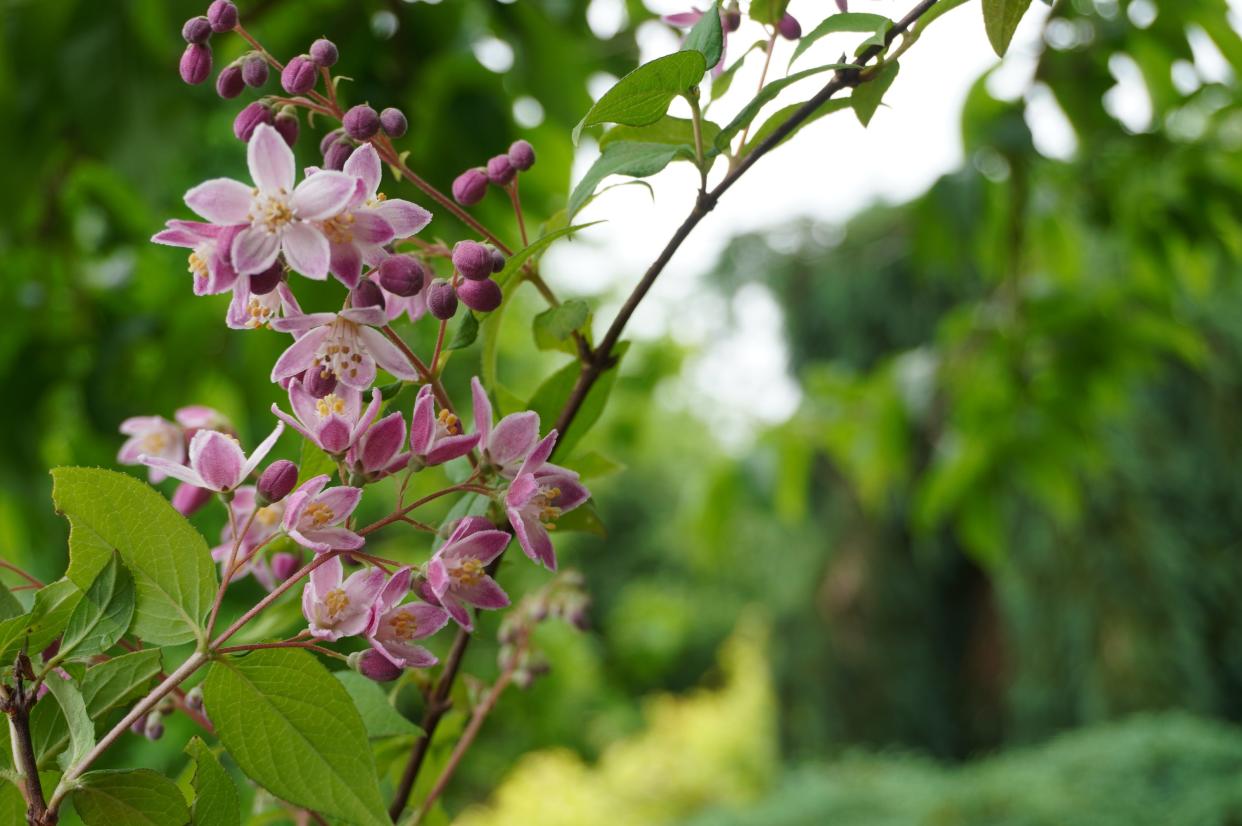
Heavenly weather arrived with the first week of June. Begonias are blooming. Baby buckeyes are forming. Peonies are flowering and paperbark maple bark glistens in the sun. Sycamores look much better for early June than most years as sycamore anthracnose disease was mild this year. Sweet bay magnolias and deutzia flowers send forth their heavenly aromas. Those worried about fallen leaves on American hollies can rest easy; it is simply the annual purge of seasonal leaf yellowing for this broad-leaved evergreen that loses about a quarter of its leaves each spring.
Blue-eyed grass
Blue-eyed grass (Sisyrinchium) is one of my favorite native wildflowers: tiny, light blue star-like flowers with cheery yellow centers and narrow leaves.
Horticultural breeders have done wonders over the years, and there are now cultivated varieties with larger flowers with more profuse blooming, growing in perennial clumps. I bought the “Lucerne” cultivar, the plant about a foot tall with profuse darker, violet-colored flowers at a local garden center the other day and it will be delightful along a backyard walkway, in a semi-sunny spot. Clumps can be divided in a few years.
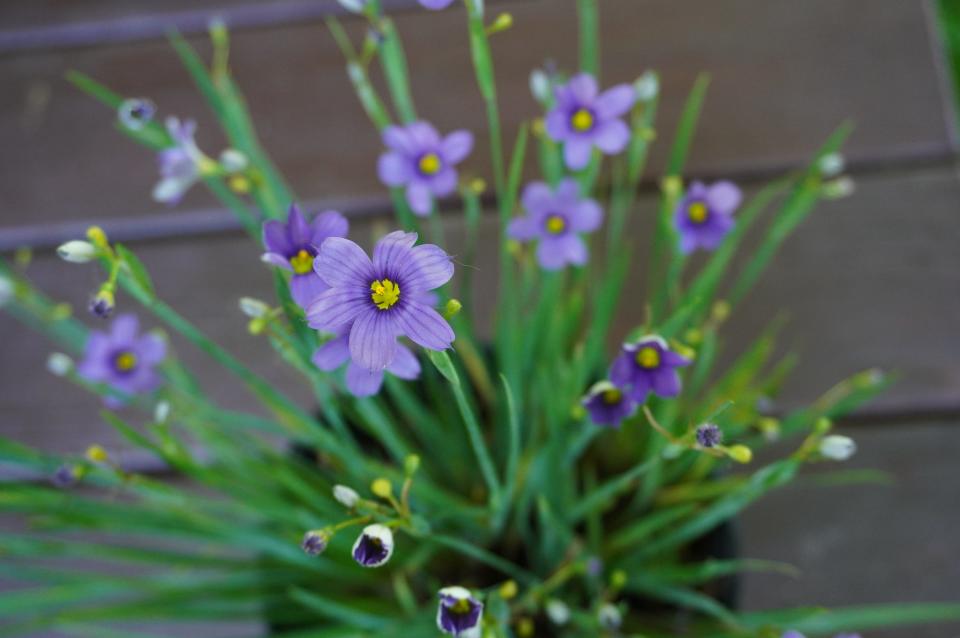
Blue-eyed grass flowers have six petals, are in the Iridaceae, the iris family — not grasses — and some of the 200 species are even white or yellow, rather than blue. Go figure.
One note: Do not despair after your daytime purchase if you find them all closed up that night. They are diurnal; they shall come back out to greet the sun the next day.
More: Plant Lovers' Almanac: Enjoy the sights, smells — and sounds — of plants and trees
Nematodes amongst us
I wrote about beech leaf disease last week, detailing the current evidence suggesting it is caused by foliar nematodes, specifically Litylenchus crenatae mccannii, with the subspecies (third part of the trinomial) name reflecting its identification on beeches by Ohio Department of Agriculture plant pathologist David McCann.
Overall, nematodes or roundworms have variable lifestyles, from free-living organisms, some of which are visible to the naked eye, dining on everything from bacteria to fungi and insects; to nematodes that vector plant pathogens such as viruses; to human pathogens, such as the nematodes that cause elephantiasis and river blindness, spread by mosquitoes. Then there are plant-parasitic nematodes, called eelworms, such as root-knot nematodes and soybean cyst nematodes, contributing to over $125 billion dollars in damage to agriculture annually.
They are rather ubiquitous, with estimates of the number of nematode species worldwide ranging from 25,000 to a million and beyond. They occur on water and land, the tropics and the arctic, deserts and mountains, depths into soil (where 90% of nematodes live) up to 2 miles down. It is estimated that there are over 60 billion nematodes, the vast majority of which are microscopic, for each human on Earth. Hard to envisage. They are the most common organisms on the ocean floor. As E. O. Wilson wrote: “the most abundant of all animals. Four out of 5 animals on earth are nematodes.” I guess we should say: Us amongst nematodes.
More: The BeaconJournal.com app is packed with great features. Here are 5 you need to know about
Some nematodes are considered “beneficial,” such as those that control greenhouse pests such as fungus gnats and western flower thrips (which vectors the plant-deadly impatiens necrotic spot virus to greenhouse flowers). In the ways of nature there are nematodes that feed on fungi and fungi that feed on nematodes. To quote Tennyson: “Nature, red in tooth and claw.”
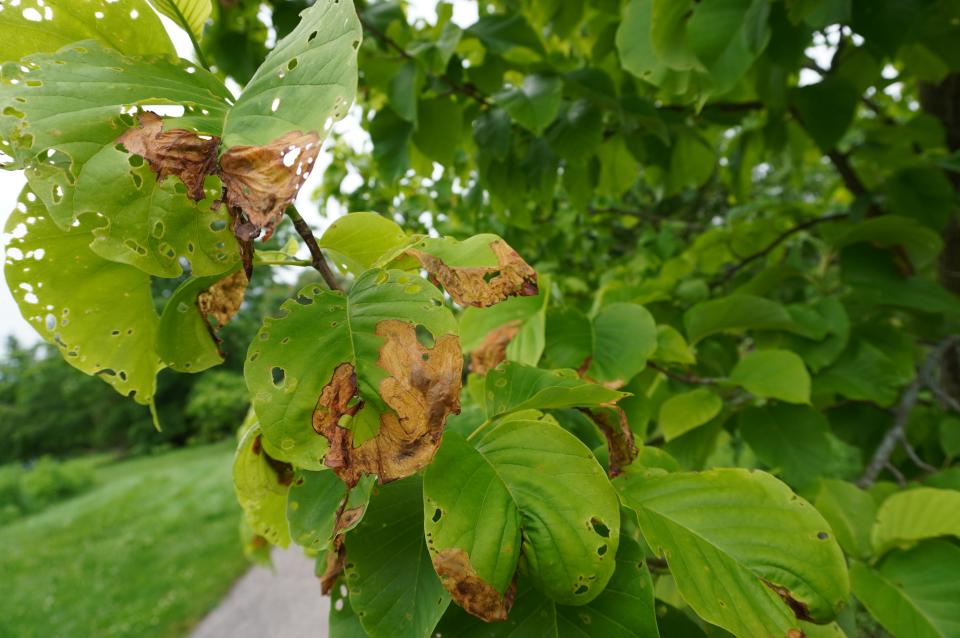
Yellow poplar weevil
Several people have called or emailed with questions about what is happening to their magnolias, specifically blotchy brown, scorched areas and small bean-shaped holes in leaves. When I have checked, this turns out to be damage by yellow poplar weevils, Odontopus calceatus.
The holes are from adult beetles that emerged from leaf duff in mid-May and fed on leaf buds, with subsequent mating and egg-laying, then with the emergent grub larvae “mining” the leaf layers, resulting in the scorchy blotches. Up next is pupation in the leaf mines and emergence of this season’s new adults with subsequently more holes in leaves.
There are insecticides that may be used, for example for next year’s damage and possibly for new adults this year, but rarely is this warranted since actual plant damage is not significant. Damage is in the eyes of the beholder, of course, for example for nurseries and garden centers, wanting to sell pristine-looking plants to their customers.
This is one of those periodic years, say once every 10 years or so, when populations are high enough that people notice damage from this “pest” more readily. If we have a drought and if this season’s adult populations are high, damage will look more severe.
As ever, I am fascinated by the name game and what it means. The official Entomological Society of America common name for this species is yellow poplar weevil. However, yellow poplar is a common name for tulip tree (Liriodendron tulipifera), which is most certainly not a poplar (it was called such because of its light wood), but rather a large tree in the magnolia family. “Yellow poplar weevils” feed on these tulip trees, on magnolia, and on sassafras, not in the magnolia family, but in a closely related family in the same order, the laurel family.
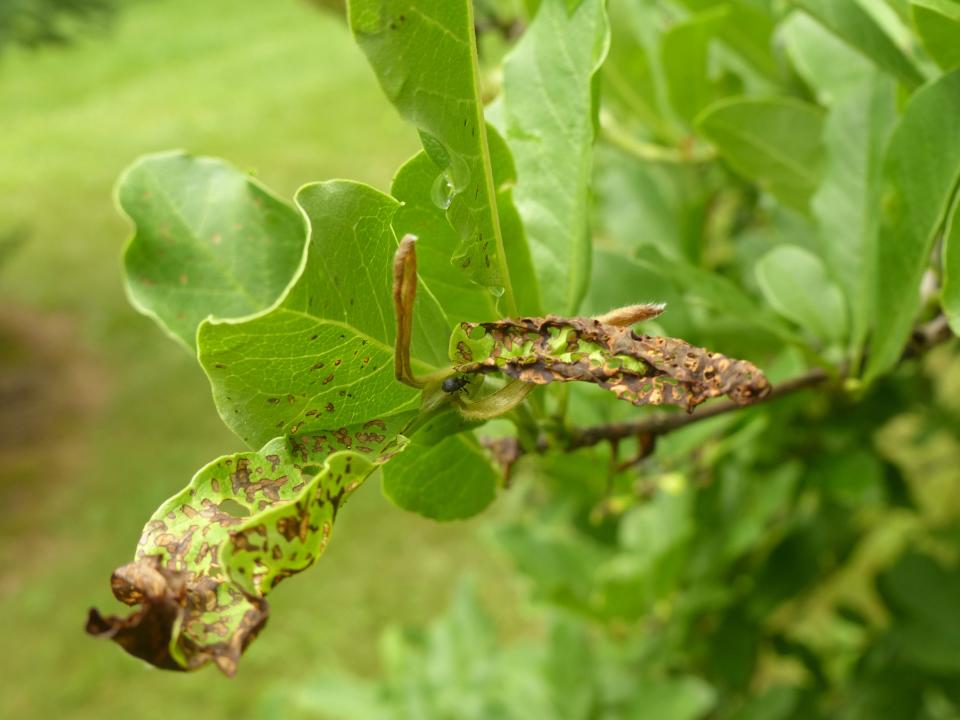
Weevils are beetles in the Coleoptera order (Coleo” means “shield” and “ptera” means “wing”).
Plant Lovers' Almanac: See wildflowers in roadside finery, plus edible and ornamental plants
Weevils are in the family Curculionidae, and are the “snout beetles,” for the downcurved mouthparts of weevils with jaws on the end better to bore into plants. Do not be afraid: Adults are only about one-eighth-inch long, won’t hurt you, and are sometimes erroneously described as “dead ticks” due to their size and general appearance and the fact that if you disturb them, say on a magnolia leaf, they tend to curl up, play dead and drop from your enquiring gaze.
Plum black knot
Last week I got an email, with a few pictures, of some mature ornamental cherry trees starting to decline in a Northeast Ohio community. Symptoms were grayish-black, spindly, distorted, galled areas on the stems and some branch dieback.
It was the usual suspect: a common fungal disease of the genus Prunus, which includes cherry, plum, almond, peach, apricot and nectarine. The fungus infects new shoots, resulting in larger and larger galls and more branch dieback over the years.
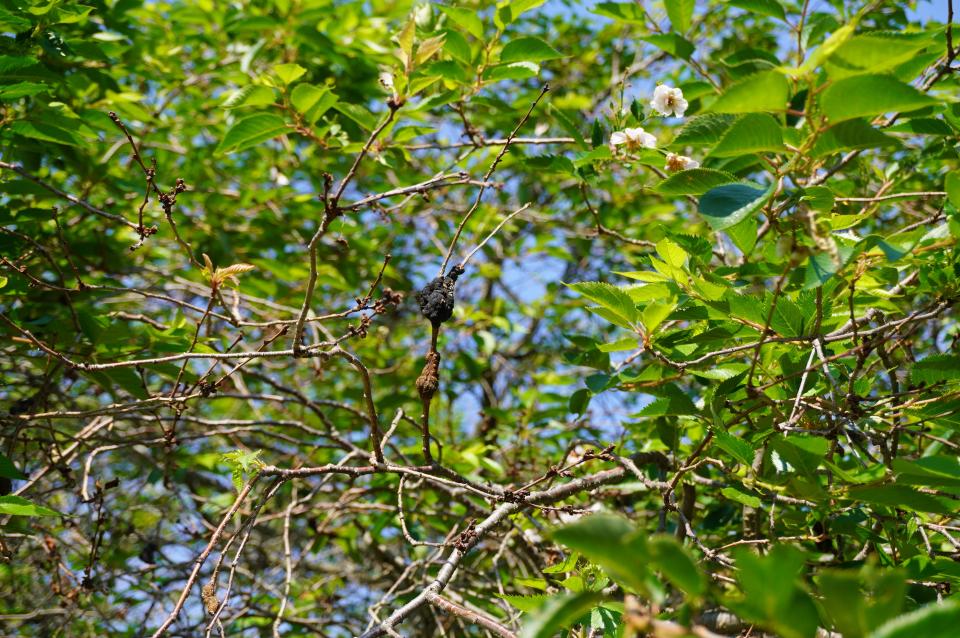
Control of black knot involves pruning out affected shoots well back of the galled areas and for fruit growers, preventive fungicides in spring before and as new growth develops (too late now).
Typically, in the landscape, the problem develops for years and is not noticed until it gets beyond our capacity for control with fungicides. Fortunately, the trees will not be an ornamental liability for some years.
Side note: The causal fungus, Apiosporina morbosa, used to have the even more ominous Latin binomial of Dibotryon morbosum. Yikes!
Jim Chatfield is a horticulture educator and professor emeritus at Ohio State University Extension. If you have questions about caring for your garden and other topics, write to chatfield.1@osu.edu or call 330-466-0270. Please include your phone number if you write.
This article originally appeared on Akron Beacon Journal: Plant Lovers' Almanac: Readers wonder what's attacking their plants

